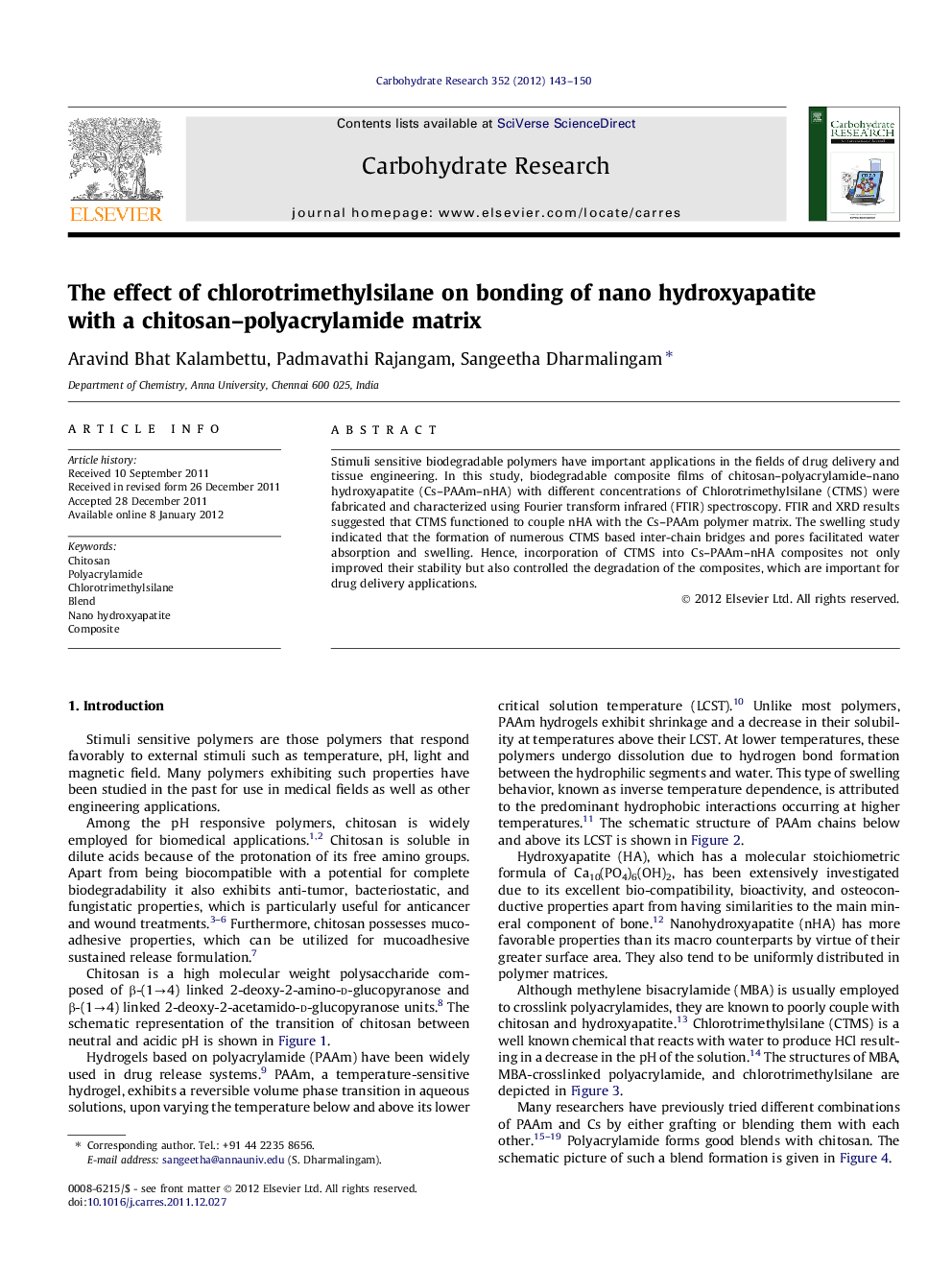| Article ID | Journal | Published Year | Pages | File Type |
|---|---|---|---|---|
| 1384250 | Carbohydrate Research | 2012 | 8 Pages |
Stimuli sensitive biodegradable polymers have important applications in the fields of drug delivery and tissue engineering. In this study, biodegradable composite films of chitosan–polyacrylamide–nano hydroxyapatite (Cs–PAAm–nHA) with different concentrations of Chlorotrimethylsilane (CTMS) were fabricated and characterized using Fourier transform infrared (FTIR) spectroscopy. FTIR and XRD results suggested that CTMS functioned to couple nHA with the Cs–PAAm polymer matrix. The swelling study indicated that the formation of numerous CTMS based inter-chain bridges and pores facilitated water absorption and swelling. Hence, incorporation of CTMS into Cs–PAAm–nHA composites not only improved their stability but also controlled the degradation of the composites, which are important for drug delivery applications.
Graphical abstractFigure optionsDownload full-size imageDownload as PowerPoint slideHighlights► Chitosan and polyacrylamide blends were fabricated. ► Chlorotrimethyl silane (CTMS) was employed as a coupling agent. ► CTMS reacts with chitosan and hydroxyapatite to form inter-chain bridges and pores. ► The reaction of CTMS with chitosan impaired the acid hydrolysis of chitosan. ► CTMS reacts with water producing HCl which facilitates the degradation of chitosan.
